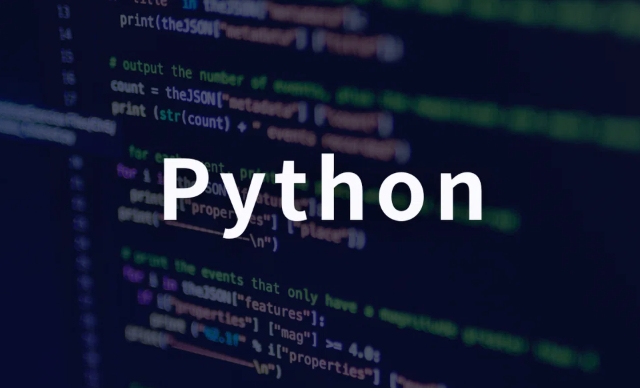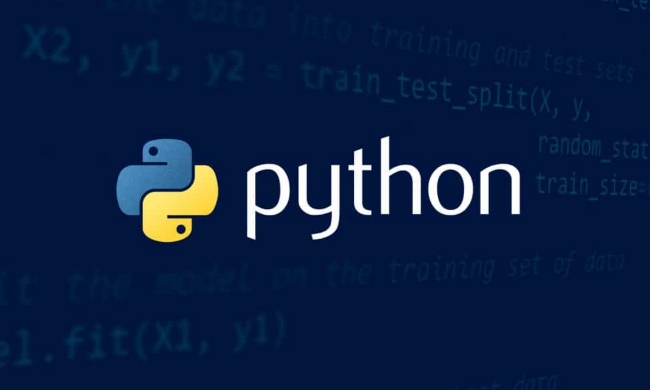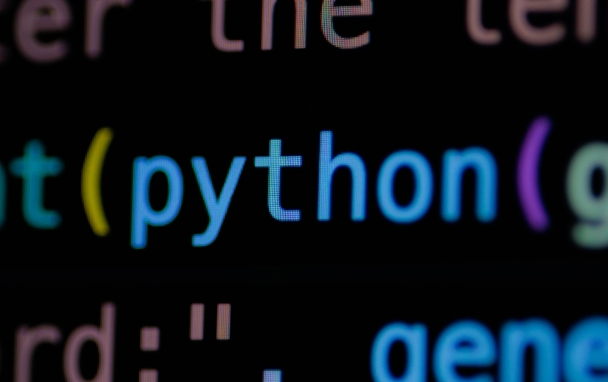Implementing Custom Context Managers in Python
In Python, a custom context manager can implement the __enter__ and __exit__ methods through classes or use the @contextmanager decorator to elegantly manage resources. 1. When using the class, __enter__ initializes the resource when entering the with block and returns, __exit__ is responsible for cleaning up when exiting; 2. When using @contextmanager, initializes the resource before yield, cleans up after yield, and ensures execution through try... finally; 3. In terms of exception handling, it is necessary to ensure that the resource is only released when it has been successfully obtained to avoid secondary errors. Both methods are suitable for different scenarios, the class is suitable for structured multiplexing, and the decorator is suitable for lightweight logic packaging.

In Python, a custom context manager allows you to manage resources such as files, network connections, or locks more elegantly. It is implemented through the with statement, which automatically calls specific methods when entering and exiting the code block, ensuring the correct initialization and release of resources. If you want to write code with clear structure and high maintenance, mastering custom context managers is a practical skill.

Use __enter__ and __exit__ methods
To create a custom context manager, the most direct way is to define a class and implement the __enter__ and __exit__ methods.

-
__enter__: is called when enteringwithblock, usually returning the resources that need to be managed. -
__exit__: It is called when exiting thewithblock, and will be executed regardless of whether an exception occurs. It is often used for cleaning operations.
For example, suppose you want to encapsulate a simple file read operation:
class MyFileReader:
def __init__(self, filename):
self.filename = filename
def __enter__(self):
self.file = open(self.filename, 'r')
return self.file
def __exit__(self, exc_type, exc_val, exc_tb):
self.file.close()How to use it is as follows:

with MyFileReader('example.txt') as f:
print(f.read()) This way, even if an error occurs during the reading process, __exit__ will ensure that the file is closed.
Use contextlib.contextmanager decorator
If you don't want to write a complete class, the contextlib module in the Python standard library provides a decorator @contextmanager , which allows you to create a context manager using generator functions.
The basic pattern is like this:
- The part before
yieldis equivalent to__enter__ - The object returned
yieldwill be assigned to the variable afteras - The part after
yieldis equivalent to__exit__
For example, we can also implement the above file reading function in this way:
from contextlib import contextmanager
@contextmanager
def my_file_reader(filename):
file = open(filename, 'r')
try:
yield file
Finally:
file.close()Then use it like this:
with my_file_reader('example.txt') as f:
print(f.read())This approach is more suitable for one-time context managers and is easier to nest logic.
What to pay attention to when handling exceptions
Whether using classes or @contextmanager , you need to consider exception handling.
- If you throw an exception before
__enter__oryield, the__exit__orfinallyblock will still be executed (provided that the resource has been opened). - In the
__exit__method, you can access exception information (via the parametersexc_type,exc_val,exc_tb), but most of the time it is recommended to just do cleaning work and not try to "swallow" the exception.
If you are using @contextmanager , be sure to put the resource in try...finally to make sure it can be released anyway.
Let me give you an example: Suppose you fail when opening a database connection, you should not try to close the connection at this time. So in __exit__ or finally , it is best to add a judgment:
def __exit__(self, exc_type, exc_val, exc_tb):
if hasattr(self, 'conn'):
self.conn.close()Or in the generator:
@contextmanager
def db_connection():
conn = None
try:
conn = connect_to_db()
yield conn
Finally:
if conn:
conn.close()This avoids errors caused by attempting to close the connection without successfully establishing the connection.
Basically that's it. The core of a custom context manager is to understand the behavior of the entry and exit stages, and to reasonably handle the acquisition and release of resources. Whether it is the class method or the decorator method, you can flexibly choose according to the specific scenario.
The above is the detailed content of Implementing Custom Context Managers in Python. For more information, please follow other related articles on the PHP Chinese website!

Hot AI Tools

Undress AI Tool
Undress images for free

Undresser.AI Undress
AI-powered app for creating realistic nude photos

AI Clothes Remover
Online AI tool for removing clothes from photos.

Clothoff.io
AI clothes remover

Video Face Swap
Swap faces in any video effortlessly with our completely free AI face swap tool!

Hot Article

Hot Tools

Notepad++7.3.1
Easy-to-use and free code editor

SublimeText3 Chinese version
Chinese version, very easy to use

Zend Studio 13.0.1
Powerful PHP integrated development environment

Dreamweaver CS6
Visual web development tools

SublimeText3 Mac version
God-level code editing software (SublimeText3)
 How to handle API authentication in Python
Jul 13, 2025 am 02:22 AM
How to handle API authentication in Python
Jul 13, 2025 am 02:22 AM
The key to dealing with API authentication is to understand and use the authentication method correctly. 1. APIKey is the simplest authentication method, usually placed in the request header or URL parameters; 2. BasicAuth uses username and password for Base64 encoding transmission, which is suitable for internal systems; 3. OAuth2 needs to obtain the token first through client_id and client_secret, and then bring the BearerToken in the request header; 4. In order to deal with the token expiration, the token management class can be encapsulated and automatically refreshed the token; in short, selecting the appropriate method according to the document and safely storing the key information is the key.
 How to test an API with Python
Jul 12, 2025 am 02:47 AM
How to test an API with Python
Jul 12, 2025 am 02:47 AM
To test the API, you need to use Python's Requests library. The steps are to install the library, send requests, verify responses, set timeouts and retry. First, install the library through pipinstallrequests; then use requests.get() or requests.post() and other methods to send GET or POST requests; then check response.status_code and response.json() to ensure that the return result is in compliance with expectations; finally, add timeout parameters to set the timeout time, and combine the retrying library to achieve automatic retry to enhance stability.
 Python FastAPI tutorial
Jul 12, 2025 am 02:42 AM
Python FastAPI tutorial
Jul 12, 2025 am 02:42 AM
To create modern and efficient APIs using Python, FastAPI is recommended; it is based on standard Python type prompts and can automatically generate documents, with excellent performance. After installing FastAPI and ASGI server uvicorn, you can write interface code. By defining routes, writing processing functions, and returning data, APIs can be quickly built. FastAPI supports a variety of HTTP methods and provides automatically generated SwaggerUI and ReDoc documentation systems. URL parameters can be captured through path definition, while query parameters can be implemented by setting default values for function parameters. The rational use of Pydantic models can help improve development efficiency and accuracy.
 Python variable scope in functions
Jul 12, 2025 am 02:49 AM
Python variable scope in functions
Jul 12, 2025 am 02:49 AM
In Python, variables defined inside a function are local variables and are only valid within the function; externally defined are global variables that can be read anywhere. 1. Local variables are destroyed as the function is executed; 2. The function can access global variables but cannot be modified directly, so the global keyword is required; 3. If you want to modify outer function variables in nested functions, you need to use the nonlocal keyword; 4. Variables with the same name do not affect each other in different scopes; 5. Global must be declared when modifying global variables, otherwise UnboundLocalError error will be raised. Understanding these rules helps avoid bugs and write more reliable functions.
 Access nested JSON object in Python
Jul 11, 2025 am 02:36 AM
Access nested JSON object in Python
Jul 11, 2025 am 02:36 AM
The way to access nested JSON objects in Python is to first clarify the structure and then index layer by layer. First, confirm the hierarchical relationship of JSON, such as a dictionary nested dictionary or list; then use dictionary keys and list index to access layer by layer, such as data "details"["zip"] to obtain zip encoding, data "details"[0] to obtain the first hobby; to avoid KeyError and IndexError, the default value can be set by the .get() method, or the encapsulation function safe_get can be used to achieve secure access; for complex structures, recursively search or use third-party libraries such as jmespath to handle.
 How to parse an HTML table with Python and Pandas
Jul 10, 2025 pm 01:39 PM
How to parse an HTML table with Python and Pandas
Jul 10, 2025 pm 01:39 PM
Yes, you can parse HTML tables using Python and Pandas. First, use the pandas.read_html() function to extract the table, which can parse HTML elements in a web page or string into a DataFrame list; then, if the table has no clear column title, it can be fixed by specifying the header parameters or manually setting the .columns attribute; for complex pages, you can combine the requests library to obtain HTML content or use BeautifulSoup to locate specific tables; pay attention to common pitfalls such as JavaScript rendering, encoding problems, and multi-table recognition.
 Python def vs lambda deep dive
Jul 10, 2025 pm 01:45 PM
Python def vs lambda deep dive
Jul 10, 2025 pm 01:45 PM
def is suitable for complex functions, supports multiple lines, document strings and nesting; lambda is suitable for simple anonymous functions and is often used in scenarios where functions are passed by parameters. The situation of selecting def: ① The function body has multiple lines; ② Document description is required; ③ Called multiple places. When choosing a lambda: ① One-time use; ② No name or document required; ③ Simple logic. Note that lambda delay binding variables may throw errors and do not support default parameters, generators, or asynchronous. In actual applications, flexibly choose according to needs and give priority to clarity.
 Can a Python class have multiple constructors?
Jul 15, 2025 am 02:54 AM
Can a Python class have multiple constructors?
Jul 15, 2025 am 02:54 AM
Yes,aPythonclasscanhavemultipleconstructorsthroughalternativetechniques.1.Usedefaultargumentsinthe__init__methodtoallowflexibleinitializationwithvaryingnumbersofparameters.2.Defineclassmethodsasalternativeconstructorsforclearerandscalableobjectcreati







